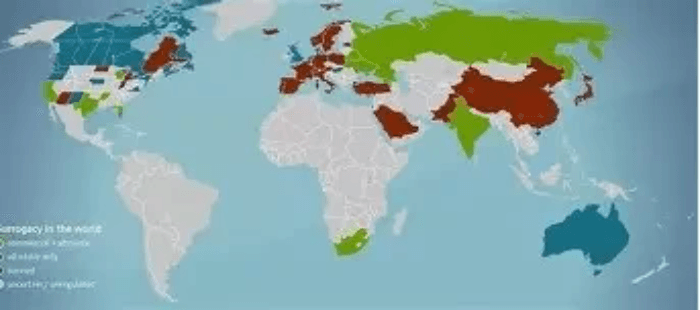Surrogacy, once a largely taboo and legally restricted reproductive option, has undergone a significant transformation in public perception over the past two decades. As reproductive technologies advance and societal norms evolve, the social acceptance of surrogacy is becoming a critical factor influencing policy, healthcare access, and individual family-building decisions worldwide. This article explores the shifting attitudes toward surrogacy, examines regional differences in acceptance, and discusses the implications for intended parents, surrogates, and global reproductive rights.
Understanding Surrogacy: A Brief Overview
Surrogacy is an arrangement in which a woman—known as the surrogate—carries and gives birth to a child on behalf of another individual or couple, known as the intended parents. There are two primary types: traditional surrogacy, where the surrogate uses her own egg and is thus genetically related to the child, and gestational surrogacy, where the embryo is created using the intended parents’ or donors’ gametes, making the surrogate genetically unrelated to the baby.
Gestational surrogacy, supported by in vitro fertilization (IVF), has become the more common and ethically preferred method, especially in countries with established legal frameworks. This method reduces potential emotional and legal complications, allowing intended parents to have a biological connection to their child while respecting the surrogate’s role as a gestational carrier.
Despite its medical feasibility, surrogacy remains a complex and often controversial topic, deeply intertwined with cultural, ethical, religious, and legal considerations.

Global Trends in Social Acceptance
Public opinion on surrogacy varies widely across regions, shaped by cultural values, religious beliefs, and historical context. In many Western countries, surrogacy is increasingly viewed as a legitimate and compassionate path to parenthood, especially among LGBTQ+ communities and individuals facing infertility.
In the United States, for example, a 2023 Pew Research Center survey found that 58% of Americans believe surrogacy is morally acceptable, with higher approval among younger demographics and those with higher education levels. States like California have become international hubs for surrogacy due to favorable laws, robust medical infrastructure, and progressive social attitudes.
In contrast, several European nations maintain strict regulations or outright bans. Germany, France, and Italy prohibit all forms of surrogacy, citing concerns over the commodification of women’s bodies and potential exploitation. However, public sentiment in these countries is slowly shifting. A 2024 Eurobarometer poll indicated that 42% of respondents in France now support legalizing altruistic surrogacy (where the surrogate receives no financial compensation beyond medical expenses), up from 31% a decade ago.
Meanwhile, countries in Eastern Europe and Asia present a mixed picture. Ukraine, once a popular destination for international surrogacy, suspended its program due to geopolitical instability, though domestic support for surrogacy remains relatively high. In India, a landmark 2022 law restricted commercial surrogacy to Indian married heterosexual couples, reflecting a complex balance between protecting women’s rights and regulating reproductive tourism.

Factors Driving Increased Acceptance
Several key factors are contributing to the growing social acceptance of surrogacy:
- Visibility and Representation: High-profile celebrities who have spoken openly about using surrogacy—such as Elton John, Nicole Kidman, and Jimmy Fallon—have helped normalize the practice. Their stories, often shared through documentaries and interviews, humanize the process and reduce stigma.
- Advocacy and Education: Nonprofit organizations and reproductive rights groups have launched public awareness campaigns emphasizing the ethical dimensions of surrogacy, the importance of informed consent, and the need for fair compensation. These efforts have helped dispel myths and promote responsible practices.
- LGBTQ+ Rights Advancements: As same-sex marriage gains legal recognition in more countries, the demand for surrogacy among LGBTQ+ individuals and couples has increased. This has, in turn, spurred broader conversations about redefining family structures and reproductive autonomy.
- Medical and Legal Safeguards: The development of standardized medical protocols and legal contracts—such as those outlining parental rights, financial agreements, and psychological screening—has increased trust in the surrogacy process. Countries with well-regulated systems report higher levels of public confidence.
- Demographic Shifts: Delayed childbearing, rising infertility rates due to environmental and lifestyle factors, and greater awareness of reproductive health have led more individuals to explore alternative family-building options, including surrogacy.
Challenges and Ethical Considerations
Despite growing acceptance, surrogacy continues to face significant ethical and social challenges:
- Exploitation Concerns: Critics argue that commercial surrogacy can exploit economically disadvantaged women, particularly in low-income countries where regulations may be weak. Ensuring fair compensation, access to healthcare, and legal protection for surrogates remains a priority.
- Legal Complexity: International surrogacy arrangements often involve conflicting laws between the surrogate’s country and the intended parents’ home country. Cases where children were denied citizenship or faced deportation have highlighted the need for harmonized legal frameworks.
- Emotional and Psychological Impact: The emotional journey of surrogacy affects all parties. Surrogates may experience postpartum emotional challenges, while intended parents may face anxiety during the pregnancy. Comprehensive psychological support is essential.
- Cultural Resistance: In societies where motherhood is deeply tied to biological connection, surrogacy may be viewed as unnatural or morally questionable. Religious institutions in some countries continue to oppose surrogacy on doctrinal grounds.

The Role of Technology and Transparency
Digital platforms are playing a transformative role in increasing transparency and trust in surrogacy. Online agencies now offer secure portals where intended parents and surrogates can communicate, track medical milestones, and access legal resources. Blockchain technology is being piloted in some regions to create tamper-proof records of surrogacy agreements, ensuring accountability.
Moreover, telehealth services have made psychological counseling and medical consultations more accessible, especially for international participants. These innovations not only streamline the process but also contribute to greater social legitimacy by demonstrating professionalism and care.
Future Outlook: Toward a More Inclusive Framework
The future of surrogacy lies in balancing reproductive freedom with ethical responsibility. Experts predict that more countries will adopt regulated models that allow altruistic or compensated surrogacy under strict oversight. International cooperation, such as bilateral agreements on parentage recognition, will be crucial for protecting the rights of children born through surrogacy.
Public education will remain key. As more people understand the emotional, medical, and legal intricacies of surrogacy, stigma is likely to diminish further. Grassroots movements led by surrogates, intended parents, and fertility advocates will continue to shape policy and public discourse.
Ultimately, the growing social acceptance of surrogacy reflects a broader societal shift toward recognizing diverse paths to parenthood. When grounded in consent, compassion, and equity, surrogacy can be a powerful expression of human solidarity and reproductive justice.

Conclusion
The social acceptance of surrogacy is no longer a fringe issue but a central topic in global conversations about family, ethics, and human rights. While challenges remain, the trajectory is clear: more people are embracing surrogacy as a valid and compassionate way to build families. For healthcare providers, policymakers, and advocacy groups, the task ahead is to ensure that this growing acceptance translates into safe, equitable, and legally sound practices for all involved.
By fostering dialogue, improving regulations, and leveraging technology, we can create a world where surrogacy is not only accepted but also respected as a meaningful choice in the journey to parenthood. As societal attitudes continue to evolve, so too will the opportunities for love, connection, and new beginnings made possible through surrogacy.
